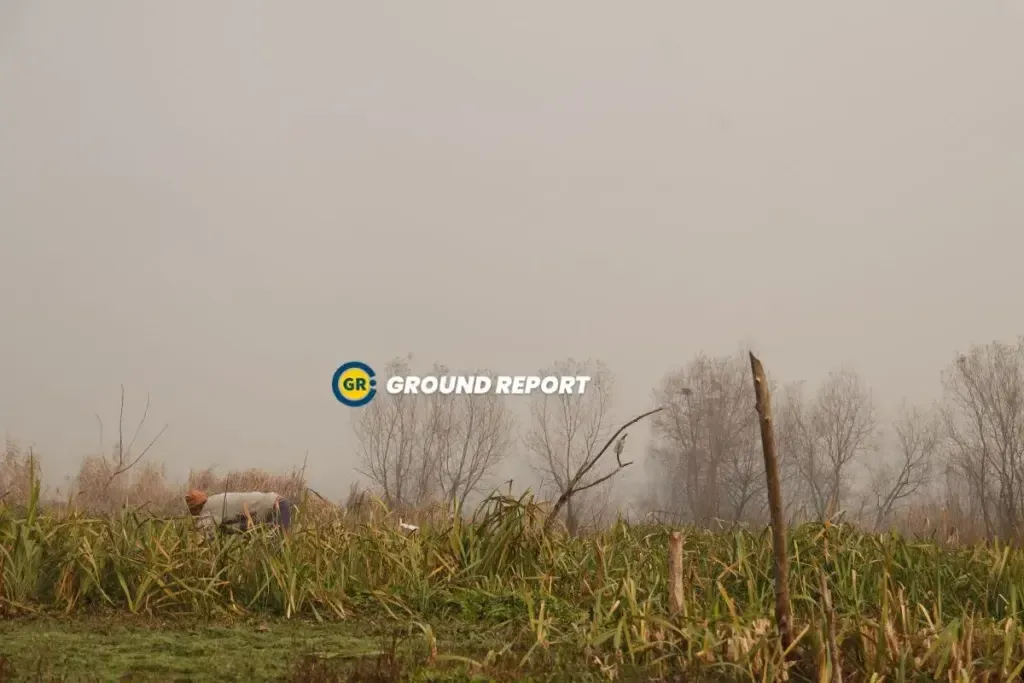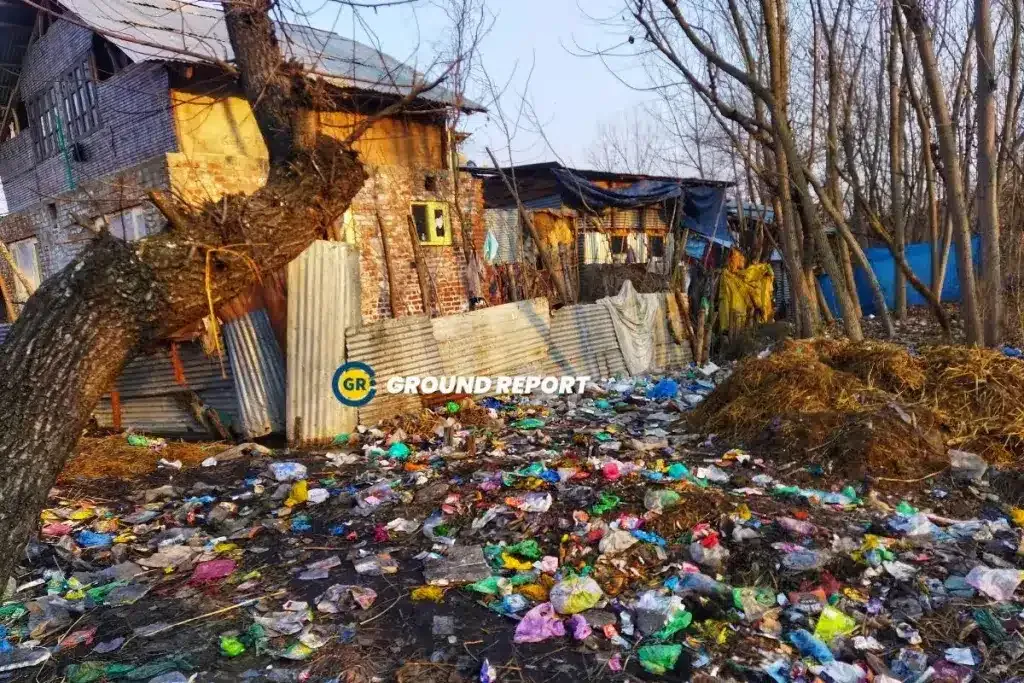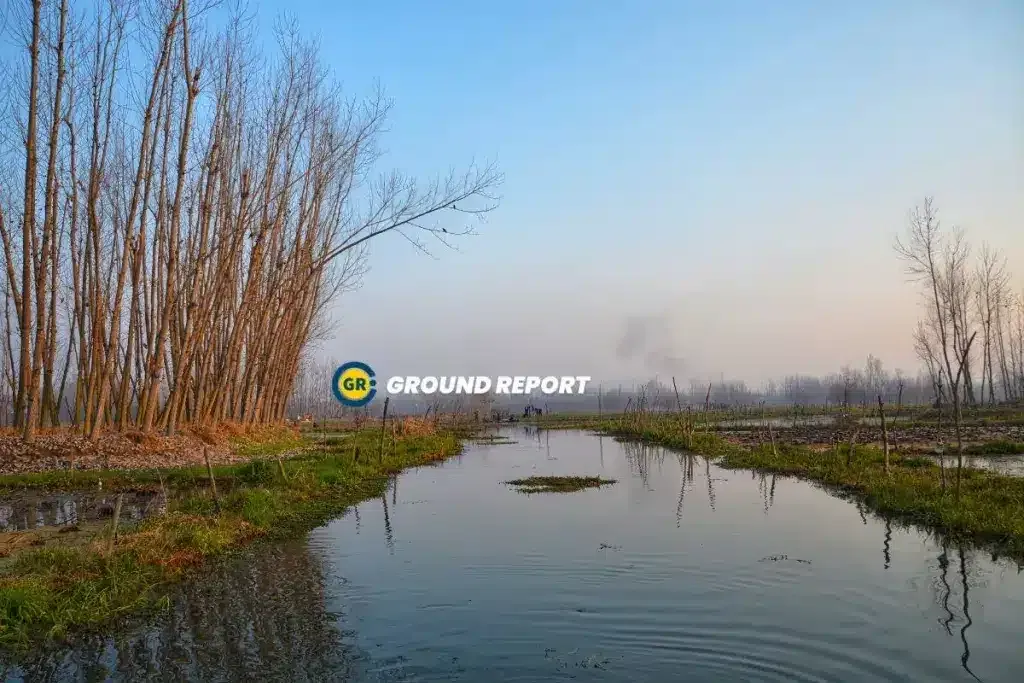Once a beautiful tourist attraction located in the mountains of Srinagar, Anchar Lake has now turned into a polluted wasteland and is on the brink of extinction.
Located in Soura, Jammu and Kashmir, the lake has been abandoned for years and has suffered from environmental degradation that has put its existence at risk.
The lake has suffered from severe pollution, increased alkalinity, and excessive weed growth, making it nearly impossible to navigate.
Anchar Lake was originally connected to the famous Dal Lake through a channel called “Amir Khan Nullah”. Due to pollution and neglect, the area of the lake has shrunk from 19.4 km2 to just 6.8 km2. In the past, visitors would row from Dal Lake to Anchar but the lake has now lost its attractiveness as a result of daily direct waste disposal into the water.
The lake has become a dumping ground for dirt and garbage, with waste being disposed of directly into the water every day. The lake has been severely polluted, which has increased its alkalinity and made it more challenging to navigate because it is overgrown with weeds.

One of the most serious consequences of the current deterioration of Lake Anchar is the impact it has had on aquatic life. Fishing is one of the main sources of income for almost 93,000 inhabitants of the region. However, with the current state of the lake, it is difficult to predict how long the fish population will be able to survive.
The main problems facing Anchar Lake are the rapid encroachment by surrounding residents, illegal construction, and lack of action against land grabbers.
Decline in Water Quality
In recent decades, Anchar Lake has faced declining water quality and health. One of the main reasons for this is the increasing pollution in and around the lake. The discharge of raw sewage and solid waste into the lake, as well as agricultural runoff, has caused nutrients such as phosphorus and nitrogen to build up in the water, leading to excessive growth of algae and other aquatic plants.

This process, known as eutrophication, depletes dissolved oxygen levels in the water, leading to the death of fish and other aquatic organisms. Excess algae and other plants also make the water appear green and cloudy, affecting the lake’s aesthetic value and making it unsuitable for recreational activities such as boating and fishing.
Anchar Lake: A Dumping Ground
Fareeda Begum, a resident who lives on the shores of Anchar Lake in Srinagar, laments the sorry state of the lake, which she describes as having been turned into a dumping ground.
She said that the lake has become a receptacle for untreated solid and liquid waste, which enters the water from various sources. She remembers how members of her community often dump garbage near her house, which is located near the lake, at odd hours of the night or early in the morning.
The other nearby areas of the lake have also used the lake as dumps for commercial and household waste. The lake’s water was drinkable and clear a few years ago. However, it is now extremely contaminated and unsuited for aquatic as well as feeding animals. “The kids stopped having fun in the water a long time ago,” she added.

Ghulam Qadir, a local fisherman said that fishermen and farmers who live around the lake, particularly, are concerned about the future of their livelihoods as the Anchar Lake degrades. As compared to the past, the lotus stem (Nadru) harvest in the lake has gone down greatly. It was the primary source of income for thousands of people and now it has become elusive after the deteriorated situation.
Even dead animals are thrown into the lake by some, and as the water level rises in the summer, they are also swept into the waters, making it impossible for the nearby houses to live there as the lake smells so bad in scorching summers, he added.
Study reveals SKIMS contamination contribution
A 2018 study by Irfana Showqi, Farooq Ahmad Lone, and Mehrajuddin Naikoo from Sher-e-Kashmir University of Agricultural Sciences and Technology (SKUAST) revealed that Sher-e-Kashmir Institute of Medical Sciences (SKIMS) is a major contributor to the contamination of Lake Anchar.
The study, titled “Preliminary Assessment of Heavy Metals in Water, Sediment, and Macrophytes (Lemna minor) Collected from Lake Anchar,” analyzed five water samples from different locations in the lake and found high levels of heavy metals, including copper, chromium, zinc, nickel, cadmium and lead. SKIMS was identified as a significant source of these contaminants due to its direct discharge and accidental release of harmful chemicals into the lake.
The study also highlighted that urban runoff and pollutants from domestic and commercial effluents in settlements around the lake have contributed to its contamination. The pollution poses a threat to the birds, fish and grasses that inhabit the lake.

The researchers recommended continued monitoring of heavy metals in the lake’s water, sediment, and aquatic life to protect the ecological status of the lake and its surroundings.
According to data from the State Pollution Control Board (SPCB), in 2018, the valley’s health centres generated a total of 3,337.78 kilograms of biomedical waste per day, SKIMS alone generated approximately 720 kilograms per day.
A 2012 study highlighted that the lake acts as a “bowl for pollutants”, causing cloudiness and an unpleasant odour in the water and endangering the species that inhabit the lake.
Anthropogenic factors harming Anchar Lake
Professor Shakeel Ahmad Romshoo an Environmentalist and academician said-
“Anchar Lake is one such wetland in Kashmir that is under threat from anthropogenic factors, a significant amount of catchment-related silt load, and nearby urbanization. It is one of the wetlands and water bodies in the Kashmir valley that has been severely deteriorated.”
Romshoo added, “Reversing the deterioration of any natural system would be a hard and time-consuming task. Still, it is undoubtedly doable with the backing of the government, the populace, civil society, and academics. A conservation and management plan must be developed for each water body or wetland”.
It will only be able to avoid future degradation of the Lake after the issues have been recognized and solutions have been suggested to solve those issues.
Humans must progress, and infrastructure must be developed, but it must be environmentally friendly. It must be planned with the least possible impact on the environment, Romshoo further said.
Keep Reading
Indian agriculture household earns just Rs. 10,218 in a month: Govt
Post-harvest losses still high, reveals data shared in Lok Sabha
Khadi Haat village’s power-free wastewater treatment solution and more
Support us to keep independent environmental journalism alive in India.
Follow Ground Report on X, Instagram and Facebook for environmental and underreported stories from the margins. Give us feedback on our email id greport2018@gmail.com.
Don’t forget to Subscribe to our weekly newsletter, Join our community on WhatsApp, and Follow our YouTube Channel for video stories.







